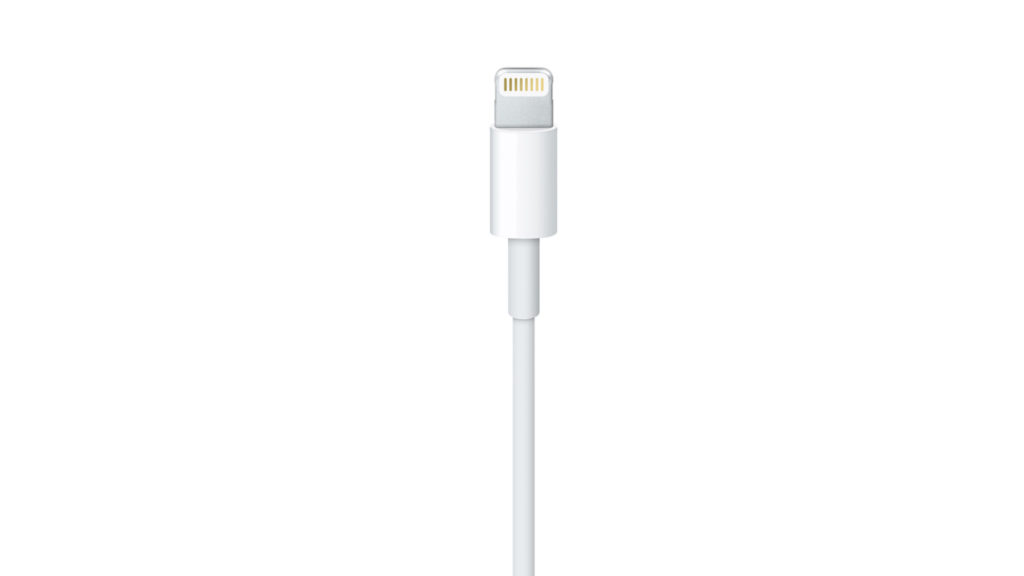Bloomberg confirms the indiscretions of analyst Ming-Chi Kuo. Apple would consider replacing the Lightning port of iPhones with USB Type-C in 2023. The Californian brand would thus comply with new European requirements, after more than 10 years with its proprietary port.
Update, posted May 13:
Bloomberg journalist Mark Gurman, reputed to be the best informed on Apple, confirms the information we were telling you about on May 11. In an article, he reveals that Apple is indeed testing iPhone prototypes with a USB Type-C port, even if the iPhone 14 of 2022 should keep the Lightning. Next year, with the iPhone 15, it is very likely that Apple will begin a transition to all USB-C (Macs and iPads are already there). The brand would simultaneously launch an adapter to make older Lightning accessories USB Type-C compatible.
Original article, published on May 11:
Are we heading for a historic change? Since 2012 and the iPhone 5, most Apple products are charged using a Lightning port, a proprietary technology hailed in its infancy for its two-sided aspect. Since around 2017, the other manufacturers have all been relying on USB Type-C, a universal technology that shares many points in common with the Lightning, while going faster (4 Gbps maximum, against 480 Mbps at Apple). USB Type-C is present in almost all competing smartphones, but also computers, tablets, headsets, game consoles, etc. Only Apple is missing, even if the brand uses this connection in its Macs and iPads.
In September 2021, the European Union announced its intention to mandate the use of a USB Type-C port on phones. This measure, which should come into effect in 2024, could prohibit Apple from selling Lightning-only products. According to analyst Ming-Chi Kuo, the Californian brand will not resist. The iPhone 14, at the end of 2022, should be the last with a Lightning port.
The iPhone 15 with USB Type-C in 2023?
On Twitter, Kuo indicates that Apple would have chosen the second half of 2023 to begin this transition. The Lightning port would then be 12 years old and, like the 30-pin (dock) port before it, would retire. The iPhone 15 would charge via USB Type-C, which would make it compatible with the charger of a Mac or Nintendo Switch. We can imagine that the rare Apple products with Lightning (AirPods, entry-level iPad, Mac accessories, etc.) will also switch to USB-C.
Why didn’t Apple do this sooner?
There are several reasons for Apple’s resistance to USB Type-C.
Already, it is important to remember that between 2012 and the mass adoption of USB Type-C in 2017, the Lightning was the best. Next to it, the Micro USB used by the competition looked very bad. It only worked one way, broke often, and didn’t always deliver good speeds. Apple was right not to wait for USB Type-C, it made iPhones better. Another advantage, the Lightning is also thinner and breaks less (the pins are on the cable, they are in the phone for USB-C).
However, for 5 years, Apple’s resistance has been quite disappointing. USB Type-C is present on Macs and iPads, but not on the iPhone, which forces owners of several Apple objects to carry around with several chargers. More annoying, the Lightning restricts the transfer speed and blocks ultra-fast charging. If the ecological argument can be put forward (why throw away all your Lightning accessories if they work?), we can also interpret this point in the other direction. Why does Apple continue to bet on a proprietary port in 2022, at the risk of multiplying the cables?

The most likely hypothesis is economic. Today, Apple earns a commission on Lightning accessories it certifies. With USB Type-C, which is universal, it won’t be so easy. This is probably why Apple intends to wait until the last moment to adopt USB Type-C which, while it will undoubtedly annoy some iPhone owners at first, will eventually be unanimous. Apple will at least get rid of the European problem, although we imagine that updating its entire ecosystem to USB Type-C will take time.
Can Apple still circumvent the law? According to European regulations, only devices without a port can do without USB Type-C. It would therefore take a purely wireless iPhone to do without universal charging. Apple has probably thought about it, but it is likely that such a solution poses more problems. The universal option is the wisest. Long live 2023!
